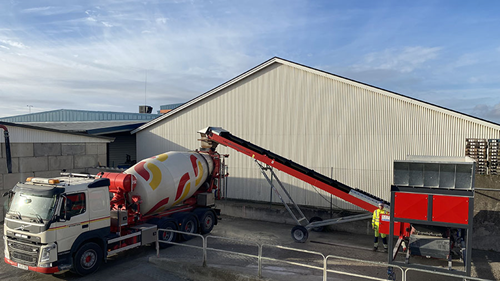

Old structures and new bold projects
Innovative recycling in concrete production: a Danish entrepreneur’s circular approach
In the scenic town of Vordingborg, in Denmark, entrepreneur Peter Halkvist has launched a pioneering concrete and recycling business. By combining two waste streams, crushed ceramic tiles and asphalt, he creates sustainable concrete blocks, reducing both environmental impact and raw material costs. With the help of RE-CON AGG 100, aMapei admixture for concrete, Halkvist has optimized his production process, cutting down on water and cement usage while improving workability. This initiative exemplifies the growing trend toward circular systems in the construction industry, with a focus on sustainability.
A Danish start-up entrepreneur uses Re-Con AGG 100 to save cement in concrete

A true circular system to make concrete blocks

Peter walks us through his production line from the receiving of crushed ceramics and asphalt, through the concrete mixing plant and finally the casting of the blocks. He tells us about how he contacted Jean Steffensen from Mapei Denmark for assistance in the concrete mix design. “The raw material is very demanding and absorptive: it was hard to keep the workability for the time I needed in the beginning. Mapei and Jean suggested to use RE-CON AGG 100 to mitigate the absorption, and it really helped”, Peter continues. “The combination of pre-wetting the raw material and using RE-CON AGG 100 helped me to cut down drastically on the water in the mix design. I also cut down my cement usage by about 50 kg per m3 of concrete. It’s a true win-win, both for the CO2 footprint and the cost of production”,
Peter concludes. “To do the same task that the RE-CON AGG 100 is doing for me, I would have to use around three times as much conventional superplastizicer. RE-CON AGG 100 was definitely a game changer for me”.
Jean Steffensen said: “At Mapei Denmark we see a growing interest for sustainability and material circularity. Halkvist Betong is a perfect example of implementation of solutions that we will see much more of in the concrete industry in the coming years. Mapei have also supplied products for ongoing major projects such as Storstrømsbroen and the Fehmarn link.”














